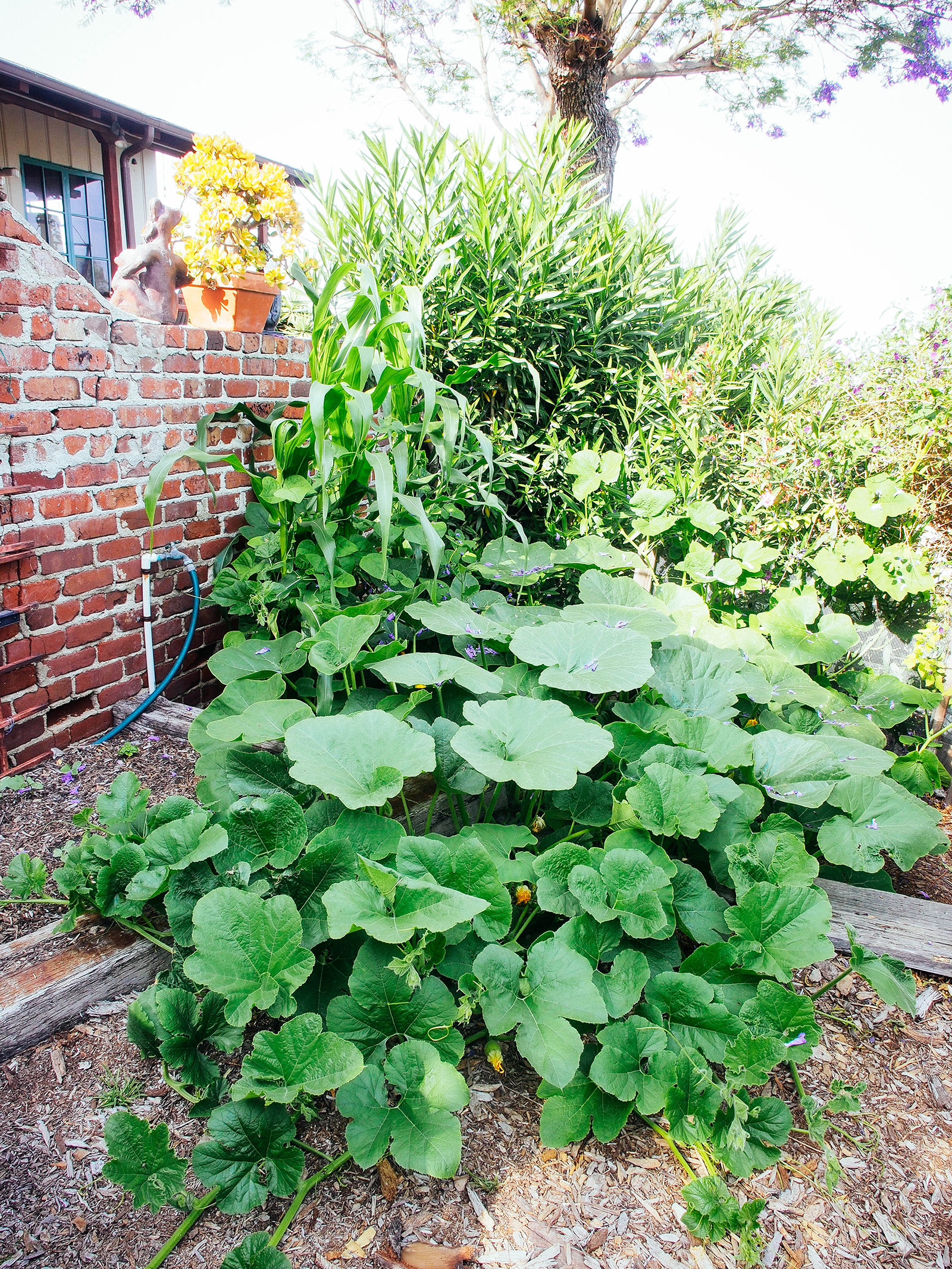In hindsight, I should’ve taken a picture of my Three Sisters garden when it was just getting started; I simply hadn’t considered how fast it would grow! The image above was only a week old at the time I wrote this article, yet those squash vines had already grown several more feet and the corn stalks had formed silks and tassels.
And just a couple of weeks after that, I was able to harvest from that once-neglected 4×6 bed that had been revived over winter through the no-dig method. (Proof that you don’t need to buy bags of expensive soil to start planting; you can make your own!)
But I’m getting ahead of myself here. If you’ve never heard of a Three Sisters garden, you might be wondering what this huge cluster of plantings is all about, and why it’s called the Three Sisters.
Who are the Three Sisters?
Rooted in Native American history, the Three Sisters garden is the original basis for companion planting, a useful technique in gardening where certain vegetables are grown together to take advantage of their natural tendencies and relationships—a form of mutual aid society, if you will.
The Three Sisters were the main agricultural crops that sustained the Haudenosaunee (also known as the Iroquois) for centuries before European settlers ever arrived: maize (corn), beans, and squash.
This ancient method of closely interplanting three companion crops created a sustainable ecosystem, in which the corn grew tall to provide the beans a structure to climb, the beans stabilized the corn stalks and fixed nitrogen in the soil for heavy-feeding squash, and the squash vine sprawled across the bed to shade the soil and suppress the weeds (in effect, acting as an edible ground cover).
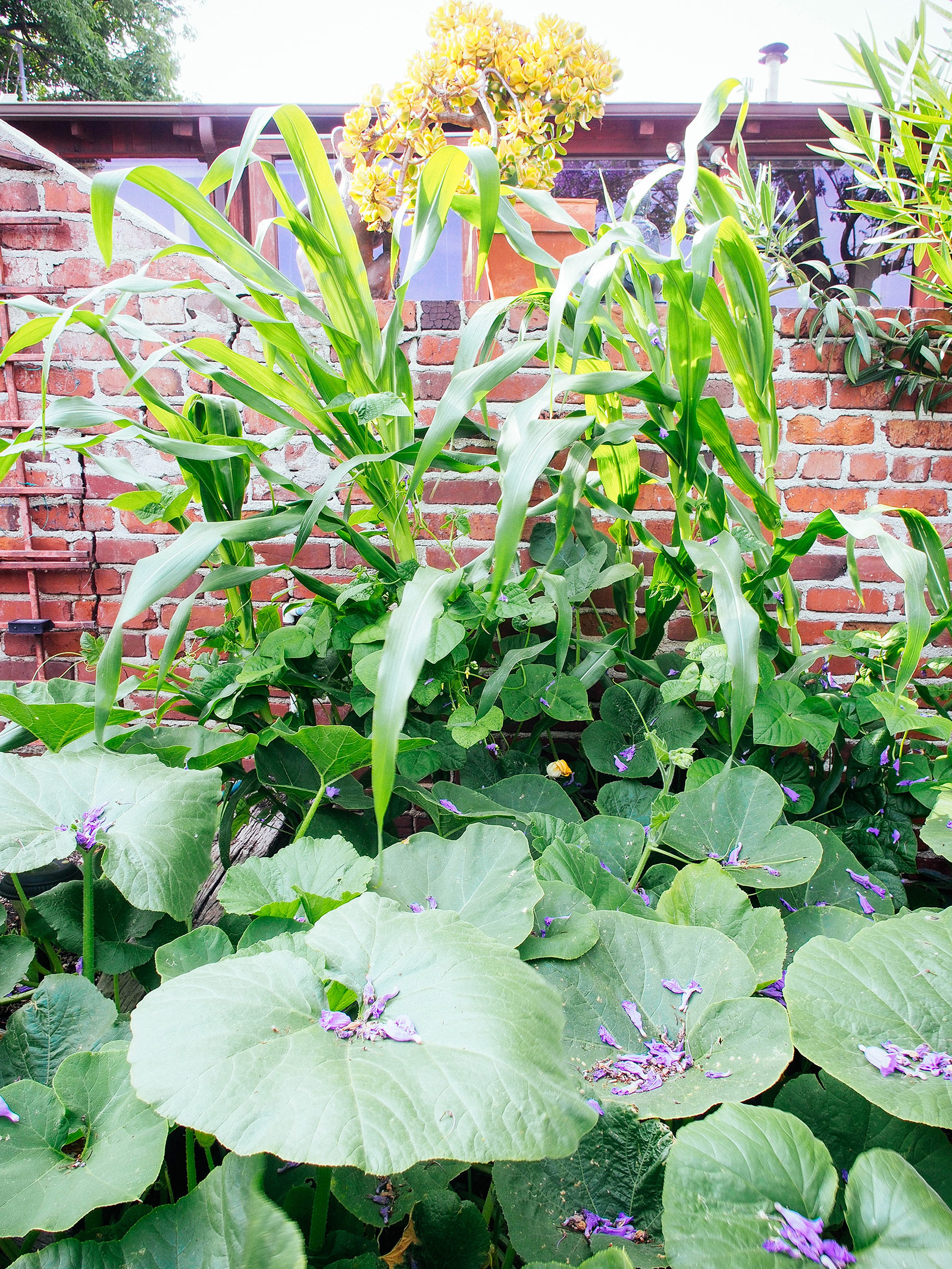
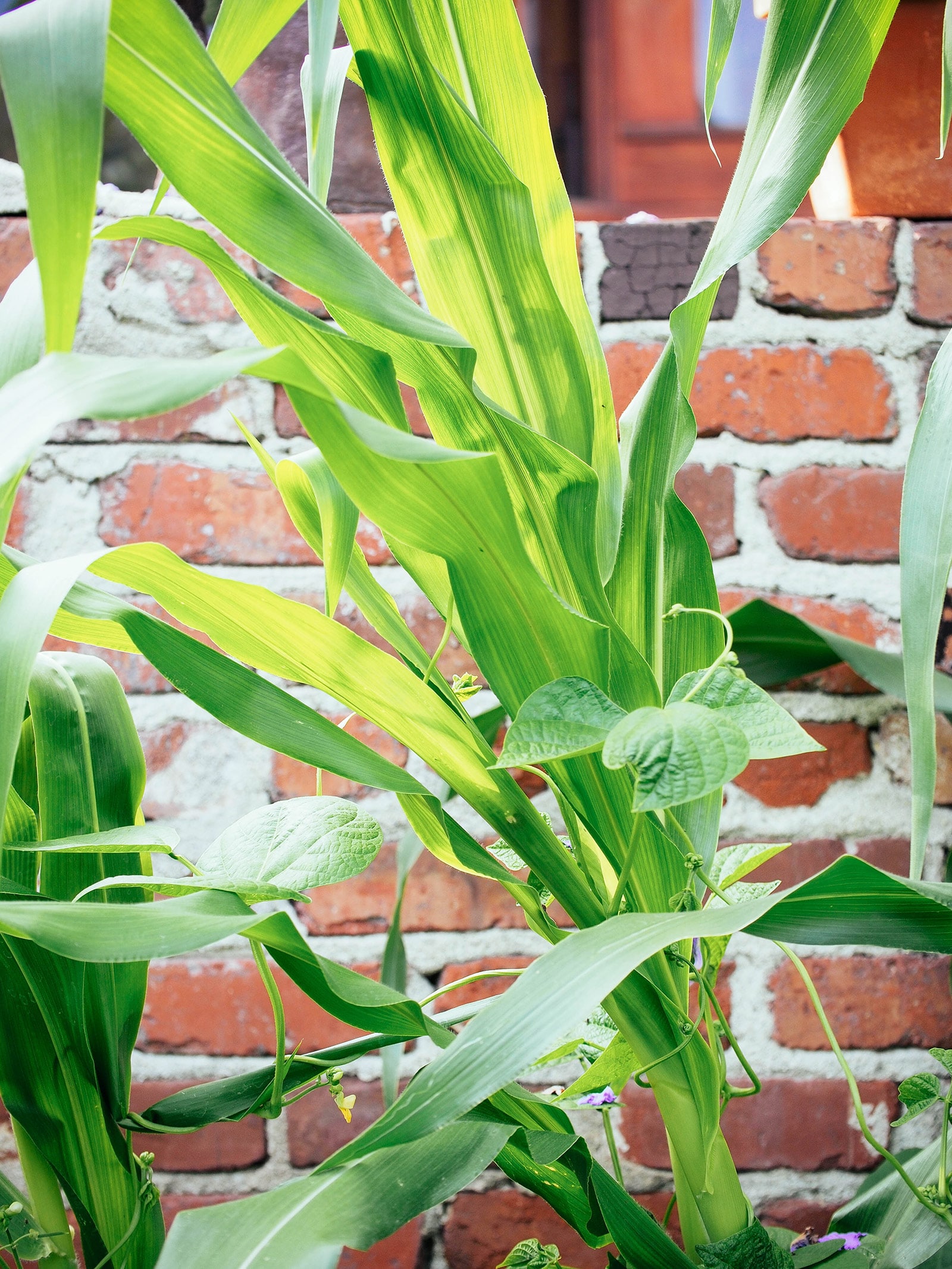

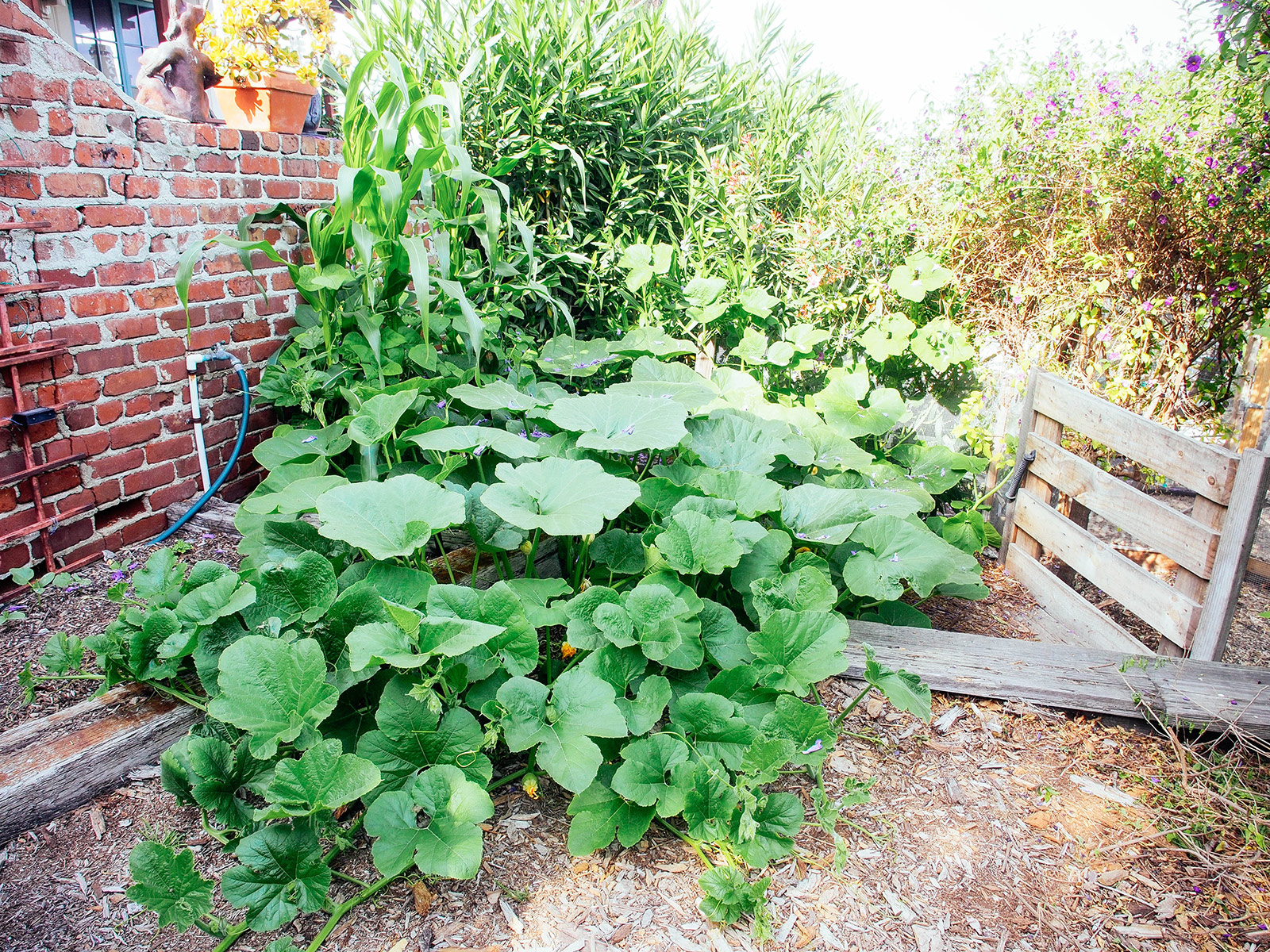
The Iroquois believed that the Three Sisters could only grow and thrive together in community, as they complemented each other not just agriculturally, but nutritionally as well. Corn was a source of carbohydrates, beans were rich in protein, and squash provided vitamins and minerals—a well-rounded diet to supplement the hunter/gatherer life. These three crops could also be dried and used as food year-round.
While these traits are less important today, they were so important in the past that they became the major cultivated crops of Indigenous peoples. In our current world of monocropping and overworking the soil, we can still learn a lot from this system to practice companion planting and improve soil fertility.
Disclosure: If you shop from my article or make a purchase through one of my links, I may receive commissions on some of the products I recommend.
Varieties to plant in a Three Sisters garden
The Three Sisters method entails the following companion plants working together:
Corn
This should be a tall variety to give the beans plenty of room to climb (and to make sure the beans don’t overcrowd the corn). Some early varieties are shorter plants that mature quickly, so they won’t work for a Three Sisters garden. Go with your favorite sweet corn, dent corn, or even popcorn here.
Favorite corn varieties to try: Honey and Cream Sweet Corn, Martian Jewels Sweet Corn, Glass Gem Flint Corn, Robust Pop Popcorn Corn
Beans
Beans should be a climbing type (also called pole beans) and not bush types, which stay compact and don’t need support. Lima, runner, yardlong, and common beans work best, as you want non-vigorous climbers and bushy pole types that won’t take over the corn.
Favorite bean varieties to try: Scarlet Emperor Pole Runner Beans, Orient Wonder Pole Yardlong Beans, Blue Lake Pole Beans, Kentucky Wonder Pole Beans
Quick tip: Before you plant beans, you should inoculate the soil with rhizobia to maximize the amount of nitrogen the beans can fix.
Squash
Squash can be summer or winter types, or a combination of both. But pay attention to what you plant: Some summer squashes, like zucchini, are bush types that stay relatively small and upright. These work great in a raised bed or other compact space, but in general, you want the vines on your squash plants to spread at least a few feet to properly “mulch” the soil.
On the flip side, be aware that vigorously vining winter squash like Pink Banana can grow up to 15 feet long, so it can quickly overwhelm the other two Sisters if you have a small garden. I typically look for squash varieties with vines between 4 to 8 feet long.
Favorite squash varieties to try: Table King Acorn Winter Squash, Red Kuri Winter Squash, Angel Hair Winter Spaghetti Squash, Waltham Butternut Winter Squash
Quick tip: Because of their similar growth habits, other cucurbits (like melons and gourds) can be substituted for the squash. Consider growing these crops in place of or in addition to the Three Sisters depending on what you like to eat and enjoy growing.
The other sisters
While corn, beans, and squash are the principal crops in a Three Sisters garden, sunflowers and amaranth were also important to the Native American people. They can offer a little shade to the other Sisters in the heat of the afternoon, provide more stalks to climb, and attract more pollinators with their flowers.
You can add these fourth (and fifth) Sisters to your garden bed as complementary plants and increase the biodiversity of your yard (which, in turn, reduces pests and diseases in other plants).
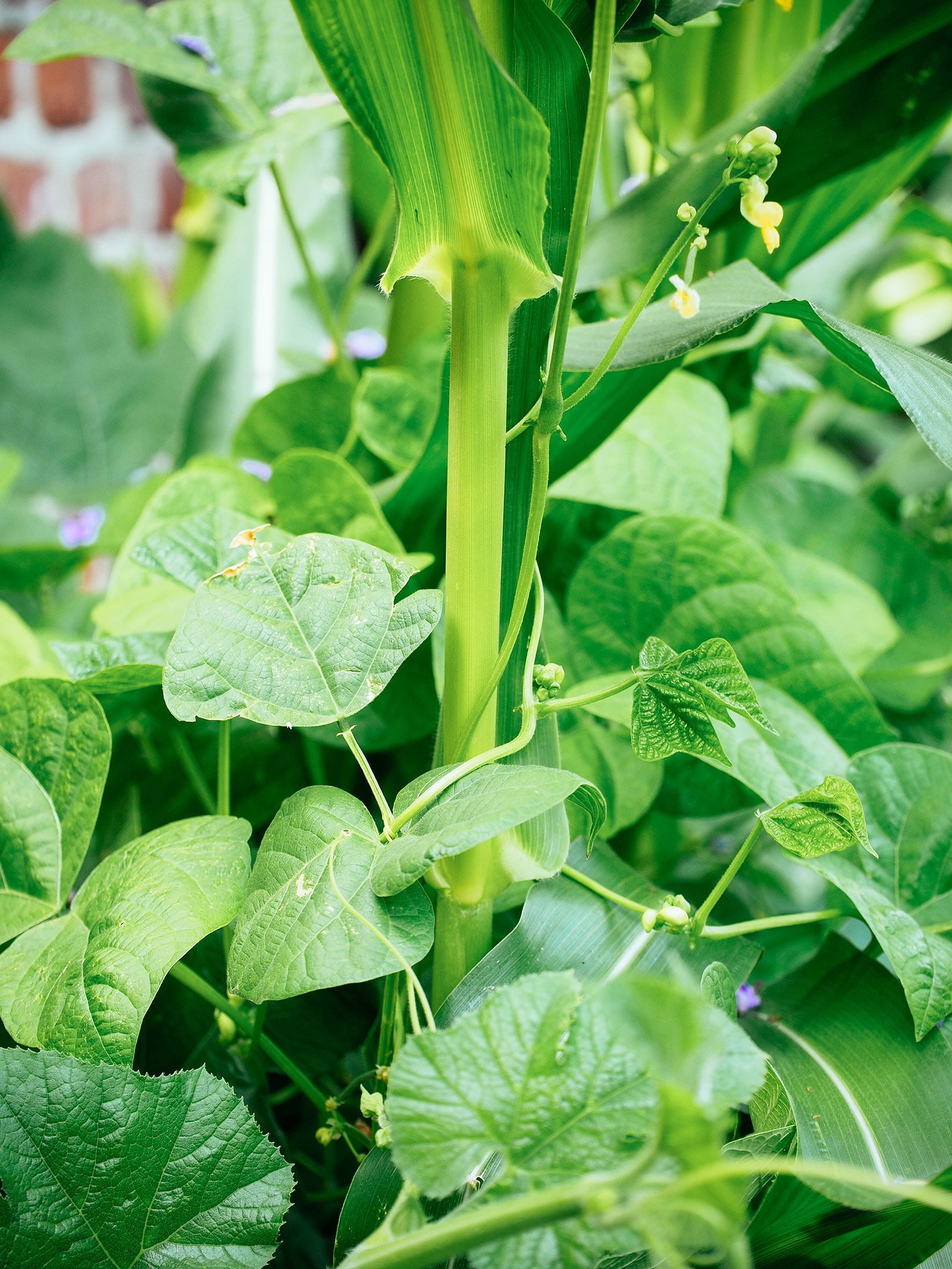
When to plant the Three Sisters
Corn, beans, and squash are warm-season plants and won’t tolerate frost. (Check your first and last frost dates here to make sure you plant at the appropriate time for your climate.) You’ll want to get seeds in the ground once nighttime temperatures are consistently 55°F and above, but not after June 1.
The plants will also need an area that gets at least six hours of direct sunlight each day. (More is better for sun-loving squash.)
In areas with very hot, dry summers, like the American Southwest, it’s important to plant the corn so that the pollen released during the corn’s tasseling period (anywhere from 30 to 70 days after planting, depending on the variety) happens before the season hits peak temperatures (typically in early July). High heat or low humidity during tasseling can lead to the pollen being sterile or much less effective, which then leads to ears of corn with missing kernels.
It’s best to direct sow seeds in the garden, since all these plants (corn, beans, and squash) don’t transplant well. That said, you can transplant seedlings if you have a short growing season; just try not to disturb their roots too much, since transplant shock can set them back a bit.
So, in what order should you plant?
Planting the Three Sisters in the order of 1) corn, 2) beans, and 3) squash will ensure they grow and mature together (and not grow at the expense of another sister crop).
By planting the corn first, it has a chance to grow nice and tall above the other crops.
Bean seeds should be sown two to three weeks later once the corn is a few inches tall—this ensures the corn stalks are tall and sturdy enough by the time the beans send out tendrils and want to climb.
Sow squash seeds two weeks after the beans have germinated; this gives the beans and corn time to grow larger so they’re not out-competed by the squash.
How to plant a Three Sisters garden
There are many different ways to plant a Three Sisters garden, whether you have sandy soil or hard clay, have a lot of land or are restricted to a raised bed. That said, the main consideration will be the amount of space you have. You want to give each individual plant enough room to grow, yet grow enough plants to facilitate pollination.
Corn is pollinated by wind and stands a better chance of producing nice, full ears of corn the more corn plants you have. It’s best grown in clusters, blocks, or staggered rows (rather than a single straight row) to ensure enough pollen gets around to all the plants.
Squash is pollinated by insects, so growing multiple squash plants in proximity will attract more insect activity once they start blooming. (In a pinch, you can also hand-pollinate squash.)
Beans are self-pollinated and will produce beans even with just one plant, but in an intensively planted garden bed like a Three Sisters, they tend to have a slightly lower yield so you’ll get more beans the more plants you have.
You can plant the Three Sisters in a linear or circular formation, depending on your space.
My 4×6 bed in these images sits against a wall, so I sowed the corn across the back first, placing a seed in a staggered row every 8 inches. Once the corn seedlings grew 4 to 6 inches tall, I sowed the beans about 6 inches in front of them, placing a seed every 3 to 4 inches, and then the squash along the edge of the bed every 2 feet, letting the vines eventually spill over the side.
Related: Get a Bigger Harvest With This Plant Spacing Guide for Raised Bed Gardens
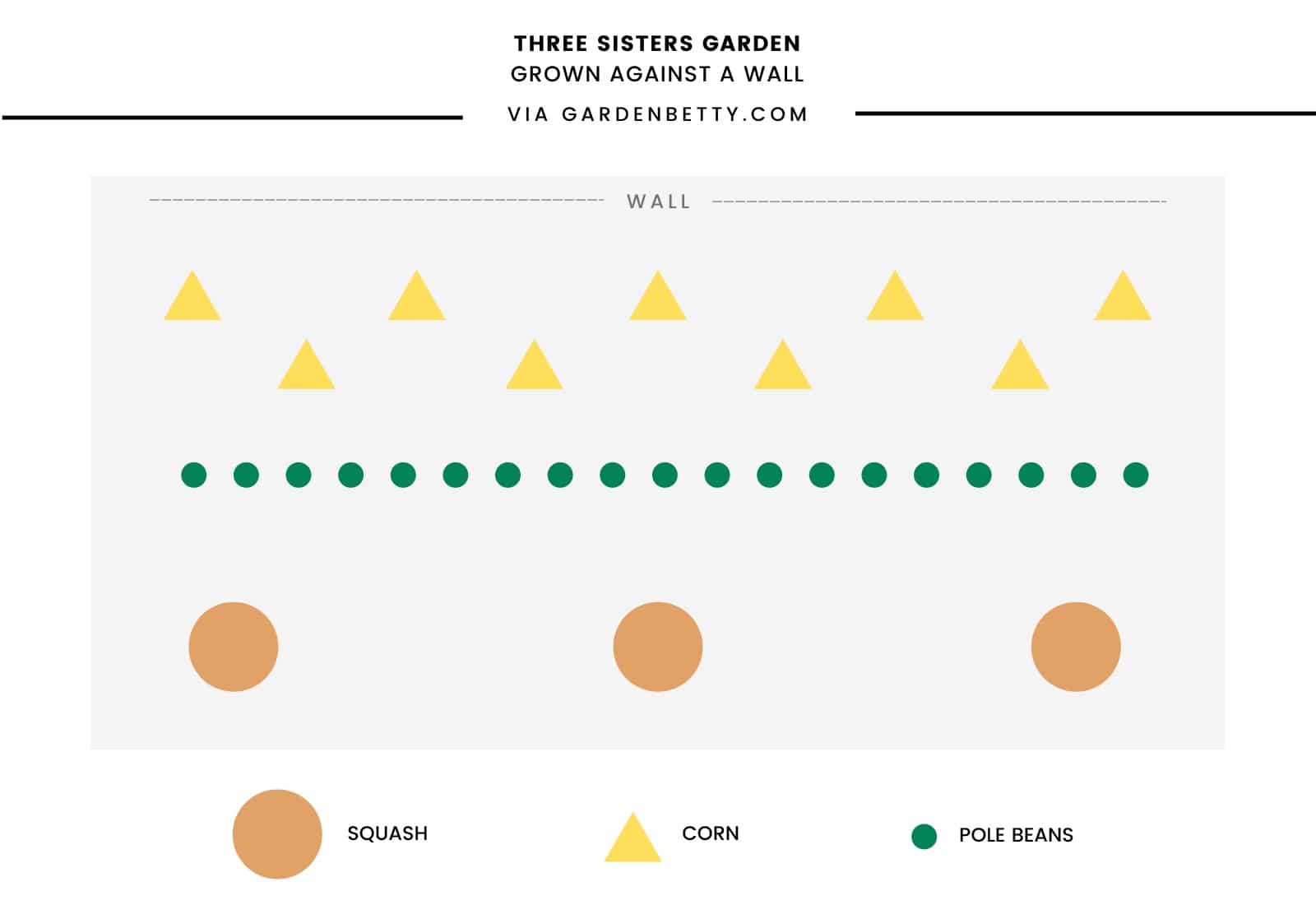
The beans started climbing the corn stalks as soon as they were tall enough, but the vines and tendrils can be trained by hand to latch on in the beginning. They’ll quickly twirl around the stalks as they climb higher, a natural tendency that helps keep the top-heavy stalks from blowing over in the wind.

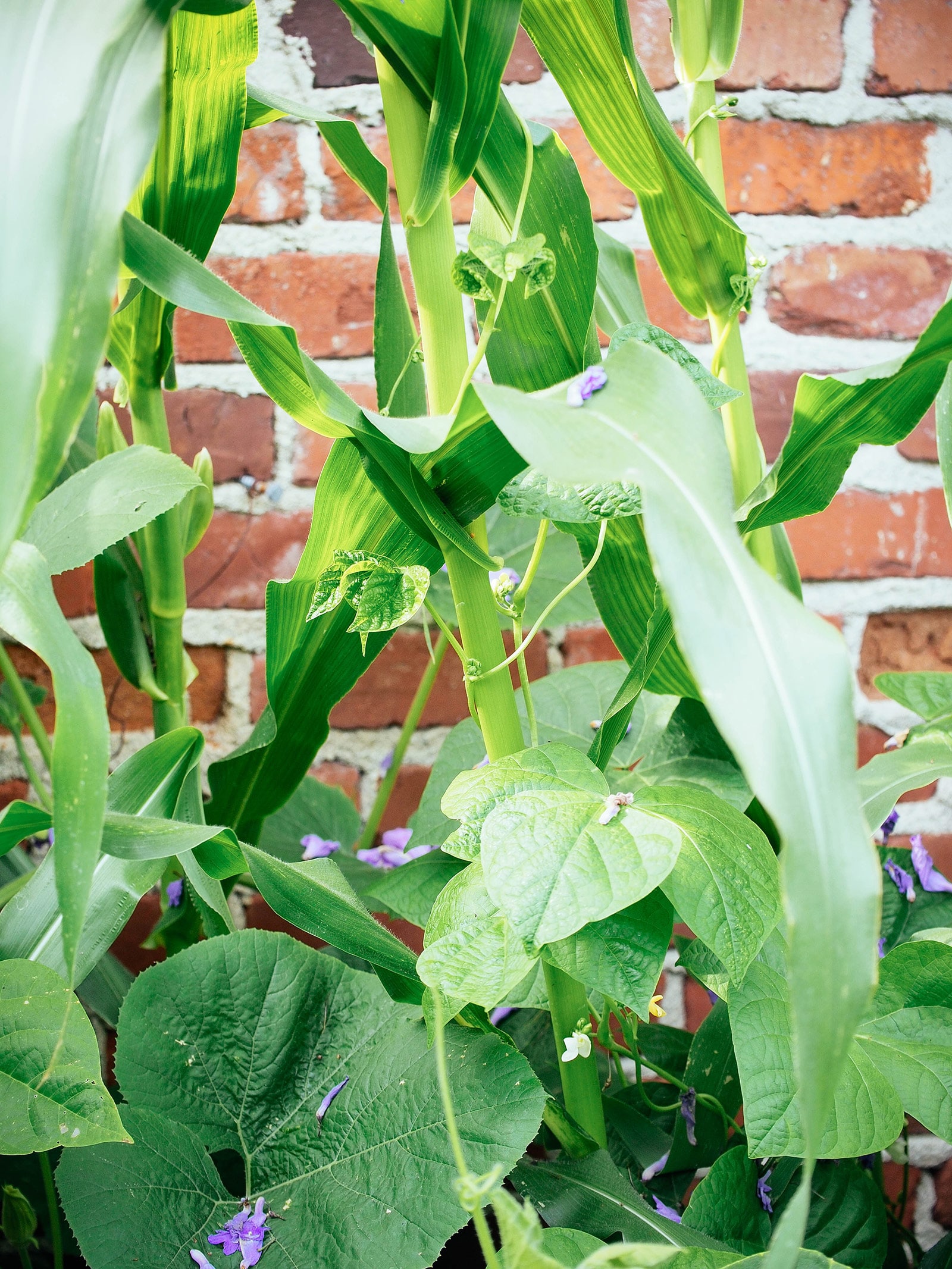
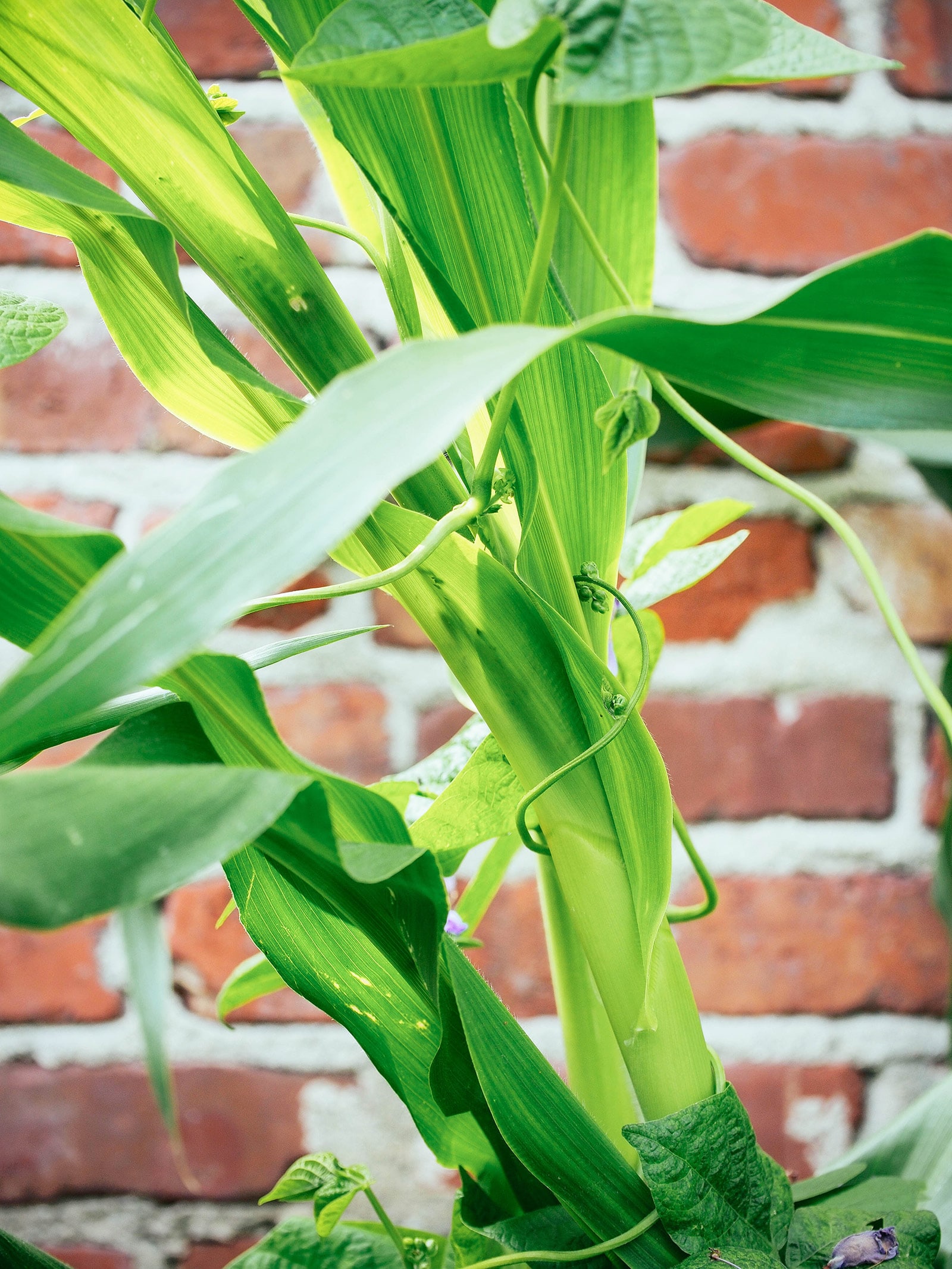
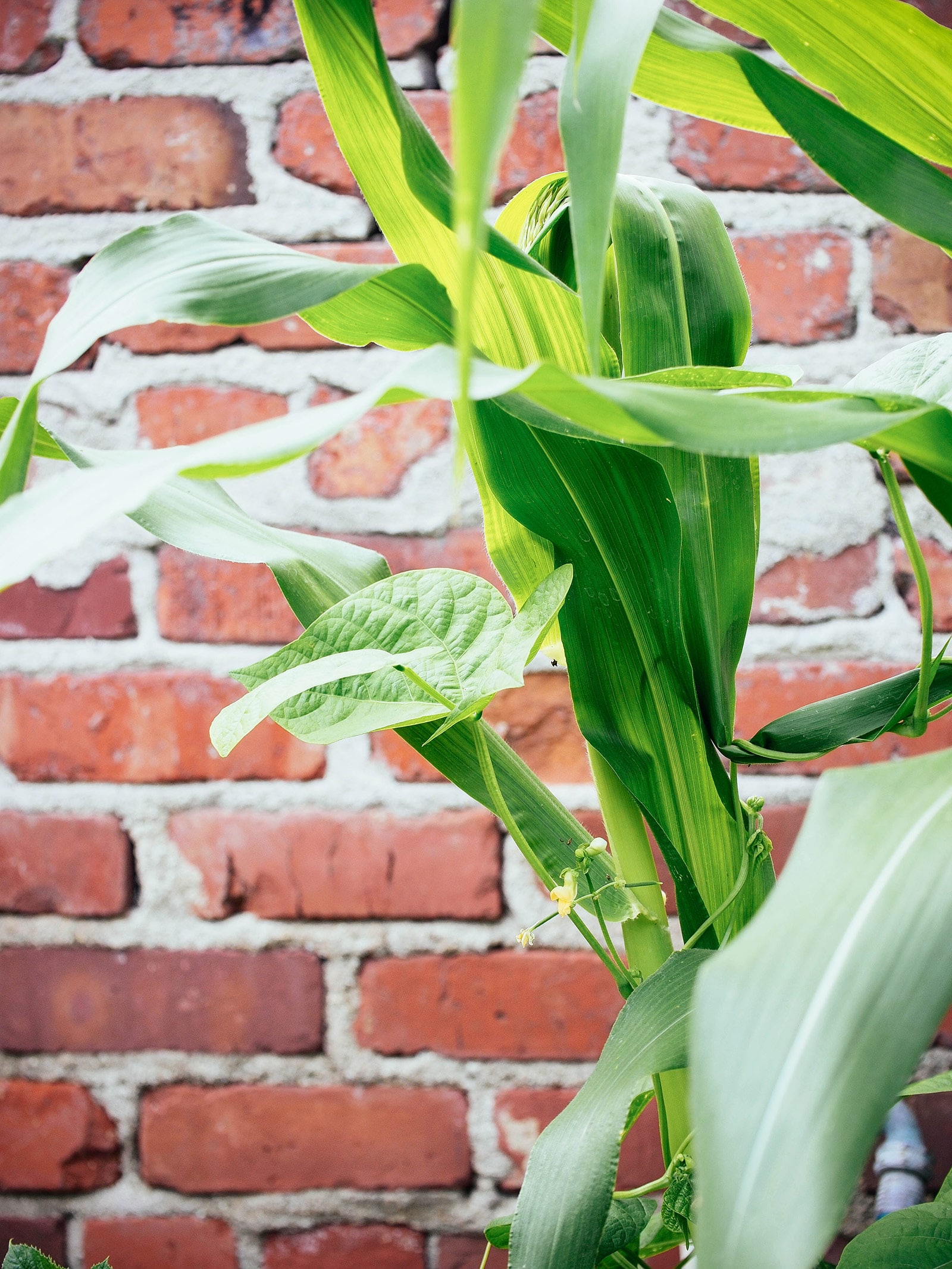
For gardeners with sandy soil, it’s best to grow the Three Sisters in a slight well, as opposed to a hill in the traditional method. A well will prevent water from running off too quickly.
For hard clay, a hill (basically a mound of soil that sits 4 to 6 inches high) will improve drainage.
If you’re planting in a raised bed, just make sure your soil is well amended and well draining—you don’t need to mound the soil since it’s already mounded (it’s just surrounded by walls).
Sample garden layouts for planting a Three Sisters garden
Here are a few more suggestions for planting your Three Sisters garden. There is no single “right” way to do it, as long as the corn provides support for the beans and the squash spreads across the soil to help retain moisture.
Use your creativity and see what works with the space you have. If you start your Three Sisters now, you’ll have corn that’s “knee high by the Fourth of July,” as the saying goes!
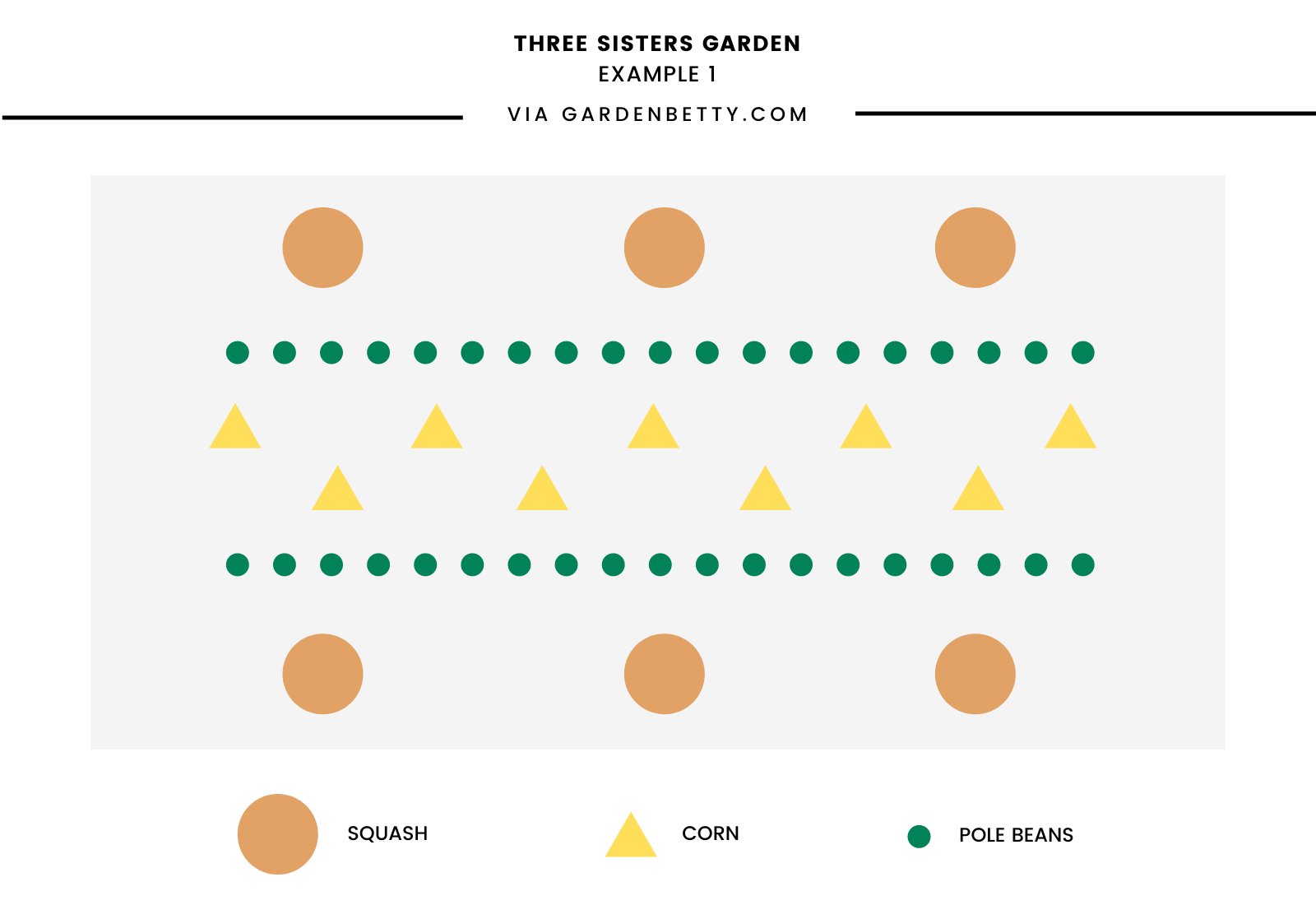

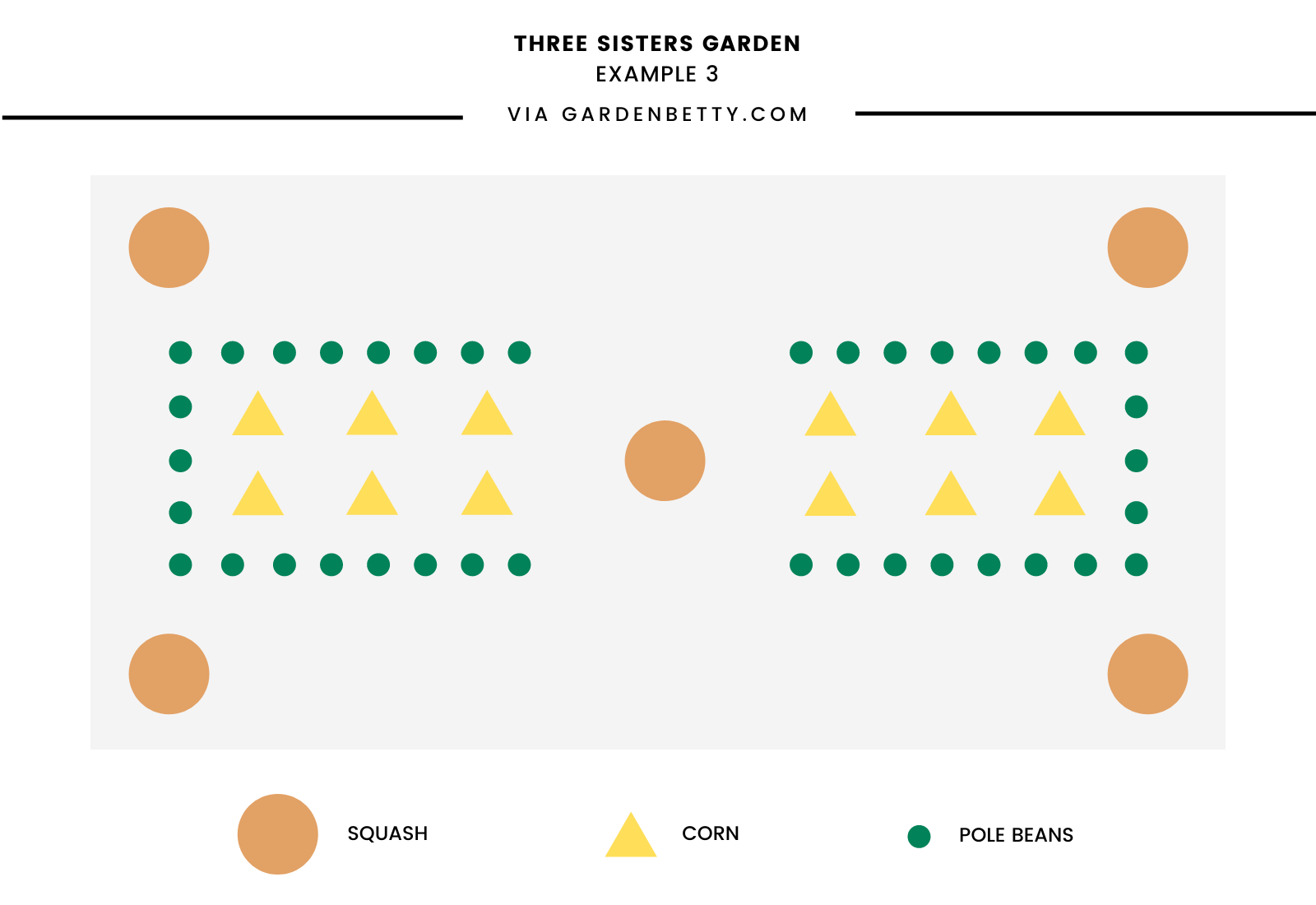

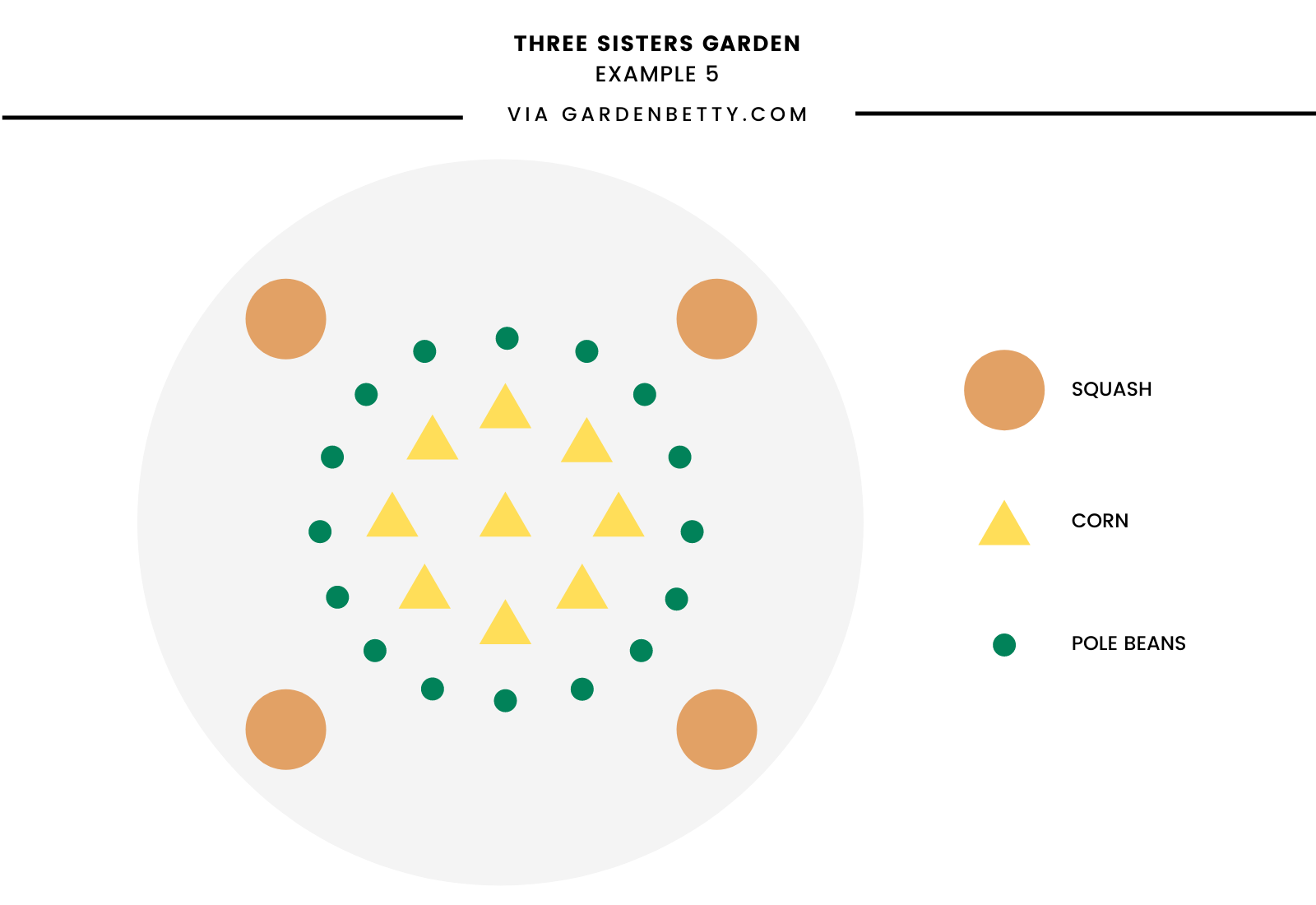
This post updated from an article that originally appeared on June 4, 2014.
View the Web Story on how to grow a Three Sisters garden.


